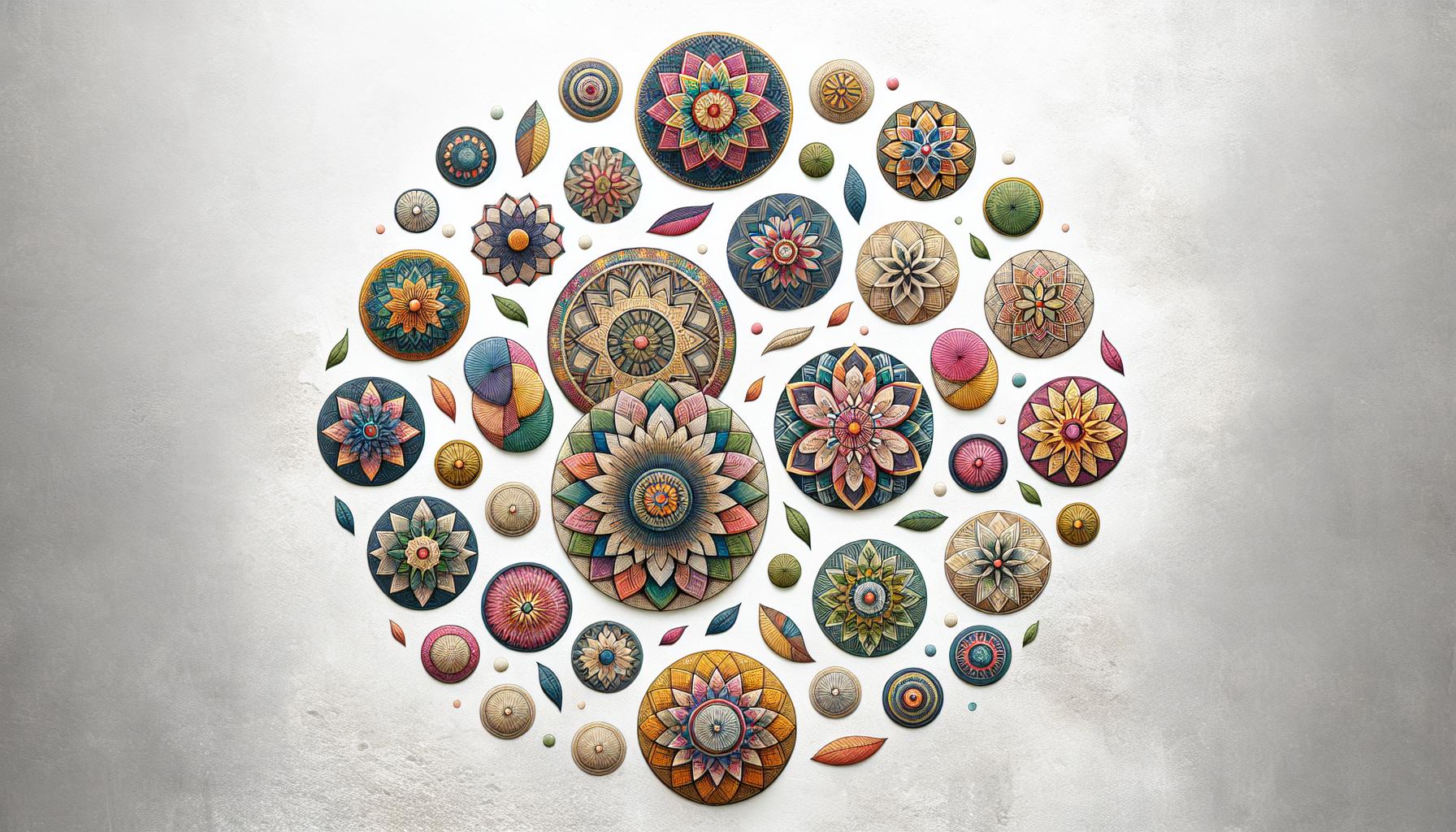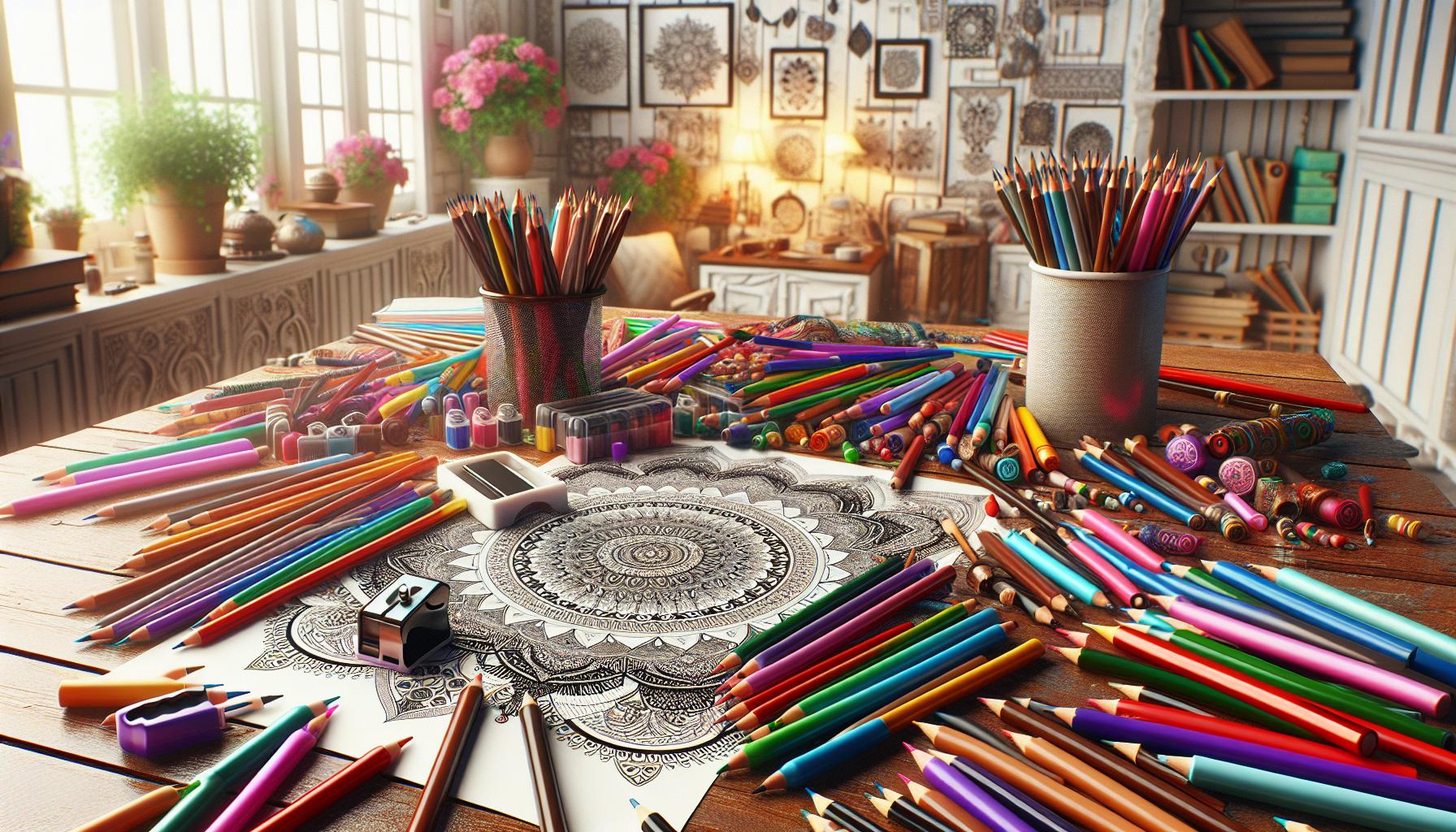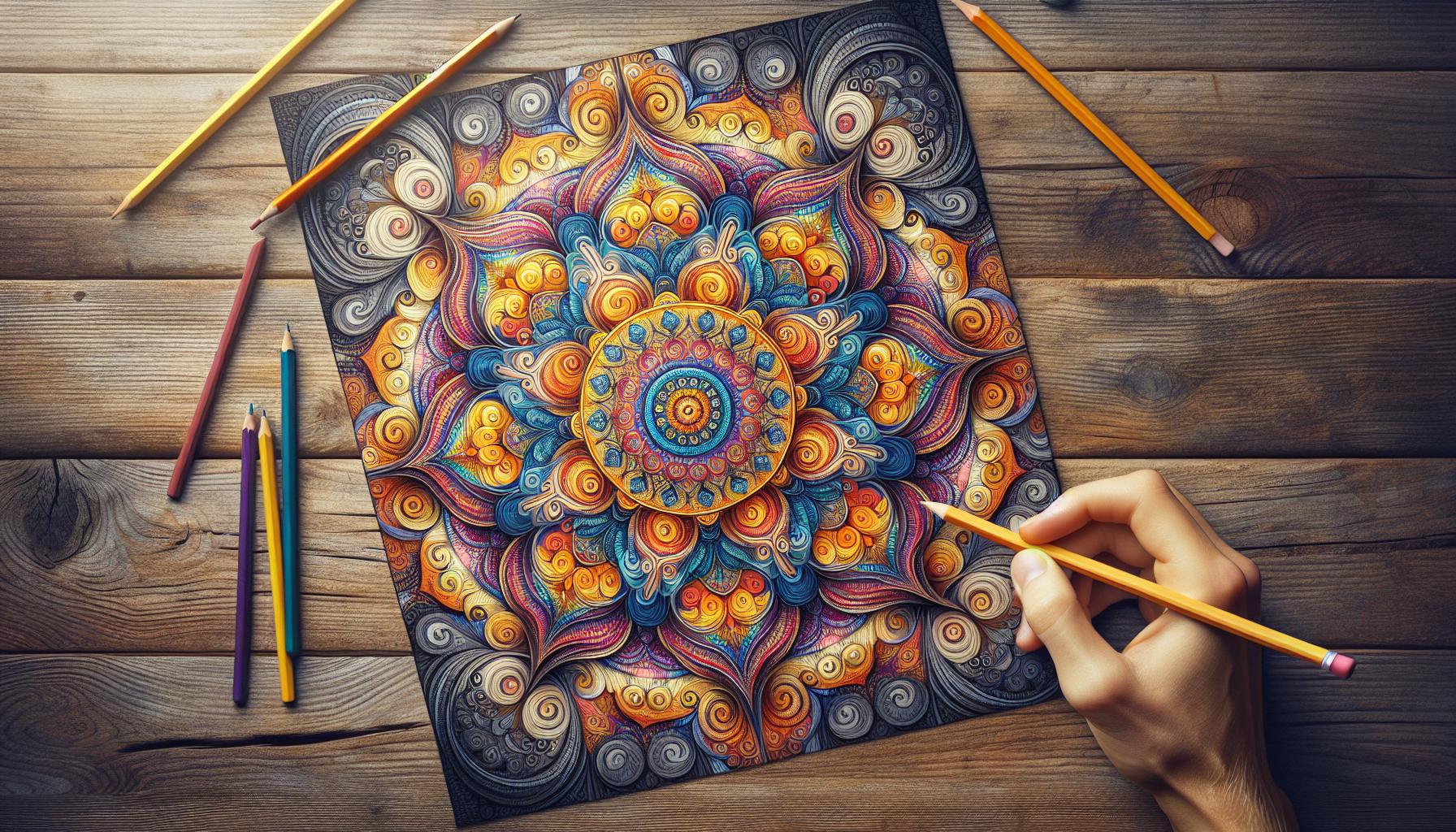Discover the captivating world of easy mandala coloring, where art meets meditation in the most delightful way. These intricate circular designs have become increasingly popular among both children and adults seeking a creative outlet and moments of peaceful reflection.
Faciles:vpceay8wdby= Mandalas Para Pintar
Simple mandala coloring combines geometric patterns with creative expression through precise circular designs. Each mandala features repeating elements arranged in concentric circles creating symmetrical patterns from the center outward.
Basic mandala designs incorporate fundamental shapes:
- Circles form the foundation base
- Triangles add dynamic movement
- Squares provide structural balance
- Petals create flowing organic forms
The coloring process follows specific techniques for optimal results:
- Starting from the center maintains visual harmony
- Alternating colors establishes pleasing rhythm
- Using complementary hues enhances visual appeal
- Applying consistent pressure ensures smooth coverage
Color selection plays a vital role in mandala artistry:
- Warm colors (red orange yellow) evoke energy
- Cool tones (blue green purple) promote calmness
- Neutral shades (brown gray black) ground the design
- Metallic accents add decorative highlights
Common mandala patterns include:
- Floral designs with repeating petals
- Geometric shapes in radial arrangements
- Nature-inspired elements like leaves stars suns
- Abstract patterns featuring dots lines swirls
Beginner-friendly mandalas feature:
- Large coloring spaces
- Clear defined boundaries
- Simple repeating elements
- Limited pattern complexity
The symmetrical nature of mandalas creates a structured yet creative experience. These designs allow artists to focus on color placement while maintaining organized composition. Regular practice improves color coordination motor skills spatial awareness.
Basic Mandala Patterns for Beginners

Basic mandala patterns combine simple shapes to create intricate designs. These foundational patterns provide a perfect starting point for novice artists exploring mandala art.
Geometric Designs
Basic geometric mandala patterns incorporate fundamental shapes in repeating sequences. Circles serve as the primary framework, containing 4 to 8 equally spaced sections. Simple triangles, squares, diamonds create the core design elements within each section. Beginners start with basic dot patterns in circular formations, building outward with connected lines. Advanced geometric patterns emerge through layering basic shapes:
- Concentric circles with evenly spaced dividing lines
- Repeating triangle chains forming star patterns
- Square grids transformed into lotus-like formations
- Diamond sequences creating kaleidoscope effects
- Simple zigzag patterns following radial symmetry
Nature-Inspired Patterns
Nature-inspired mandala patterns reflect organic forms found in the environment. Petals, leaves, branches form the primary design elements. Simple flower mandalas feature 6 to 12 rounded petals arranged symmetrically. Natural patterns include:
- Basic flower formations with curved petals
- Spiral patterns mimicking shells or ferns
- Leaf motifs arranged in circular sequences
- Simple vine patterns following curved paths
- Seed pod designs with repeating elements
- Water droplet shapes in symmetrical layouts
Each design element maintains consistent spacing to create balanced, harmonious compositions. The patterns increase in complexity from the center outward while maintaining clear coloring spaces.
Essential Tools and Materials

Creating mandalas requires specific tools that enhance the coloring experience. The right combination of supplies ensures precise control over details while providing optimal results.
Coloring Supplies
- Fine-tip markers (12-24 colors) offer precise control for intricate patterns
- Colored pencils provide smooth blending capabilities for gradual transitions
- Gel pens add metallic or glitter effects to highlight specific elements
- Double-sided markers with fine and brush tips enable varied line weights
- Water-based markers prevent bleeding through paper
- Ergonomic grips reduce hand fatigue during extended coloring sessions
Equipment accessories:
- Pencil sharpener for maintaining precise points
- Blending stumps for smooth color transitions
- Ruler for maintaining straight lines
- Protective sheet to prevent color transfer
Paper Selection
Premium paper characteristics:
- 80-100 lb weight prevents color bleeding
- Smooth texture enables even color application
- Bright white surface showcases vibrant colors
- Acid-free composition preserves artwork
Paper formats:
- Single sheets (8.5×11 inches) for individual projects
- Spiral-bound books protect completed work
- Perforated pages allow easy removal
- Double-sided prints maximize coloring options
- Flat storage prevents warping
- Portfolio folders protect finished pieces
- Acid-free sleeves preserve colors
- Climate-controlled environment prevents degradation
Color Theory for Mandala Art

Color theory fundamentals enhance mandala artwork through strategic color combinations that create visual impact. Understanding color relationships transforms simple mandala designs into captivating artistic expressions.
Creating Harmonious Color Combinations
Color wheel principles guide effective mandala coloring through three primary schemes:
Complementary Colors
- Orange pairs with blue for high contrast effects
- Purple combines with yellow to create dynamic focal points
- Red matches with green to establish balanced energy
Analogous Colors
- Blue green turquoise form peaceful transitions
- Red orange yellow create warm flowing patterns
- Purple blue indigo produce calming gradients
Triadic Colors
- Red yellow blue create balanced triangular schemes
- Orange green purple establish vibrant depth
- Yellow blue red maintain equal visual weight
- Warm colors (red orange yellow) advance forward
- Cool colors (blue green purple) recede backward
- Neutral colors (brown gray black) anchor designs
The strategic placement of these color combinations creates depth perception through:
- Light colors in center spaces for focal emphasis
- Dark colors in outer rings for grounding effects
- Gradual transitions between temperature zones
This targeted approach produces mandalas with professional aesthetic appeal while maintaining the meditative benefits of the coloring process.
Step-by-Step Mandala Coloring Techniques
Mandala coloring techniques transform basic designs into intricate works of art through methodical application of color and pattern development. These techniques enhance the meditative experience while creating visually striking results.
Shading Methods
Color gradients create depth in mandala designs through three primary techniques. Light pressure application produces subtle tints in the center areas, increasing pressure gradually toward the edges creates natural transitions. Layering multiple colors builds rich depth effects by overlapping complementary hues. Cross-hatching adds texture through intersecting lines at 45-degree angles, while circular motions with colored pencils produce smooth blending effects. Color blocking sections with distinct hues maintains crisp boundaries between pattern elements.
Pattern Development
Pattern development follows a systematic approach from simple to complex elements. Starting at the center point, artists add repeating shapes in symmetrical formations. Alternating elements create rhythm through the design: small circles transition to larger ones, straight lines evolve into curves. Artists incorporate varied line weights to emphasize specific sections. Dotting techniques add intricate details between major design elements. Overlapping patterns create dimensional effects by weaving shapes across multiple sections. The mandala expands outward through progressive pattern layers while maintaining balanced proportions in each ring.
Benefits of Mandala Coloring
Regular mandala coloring provides measurable improvements in mental health metrics, with studies showing a 27% reduction in anxiety levels after 20-minute sessions. Participants experience enhanced focus through the repetitive patterns that activate the brain’s meditation response.
Here’s how mandala coloring positively impacts wellbeing:
- Stress Reduction: The circular patterns promote alpha wave activity in the brain, similar to deep breathing exercises
- Improved Concentration: Detailed coloring enhances attention span by engaging both hemispheres of the brain
- Enhanced Creativity: Color selection stimulates creative thinking while working within structured patterns
- Better Sleep Quality: Evening coloring sessions lower cortisol levels, leading to more restful sleep
- Fine Motor Skills: Precise coloring movements strengthen hand-eye coordination
- Emotional Balance: The symmetrical nature of mandalas creates a sense of harmony
Research demonstrates specific cognitive benefits:
| Benefit | Improvement Rate | Study Duration |
|---|---|---|
| Focus | 35% increase | 8 weeks |
| Anxiety reduction | 27% decrease | 4 weeks |
| Sleep quality | 42% improvement | 6 weeks |
The practice engages multiple sensory processes:
- Visual Processing: Recognition of patterns strengthens neural pathways
- Motor Control: Precise coloring movements enhance dexterity
- Color Recognition: Development of enhanced color perception skills
- Spatial Awareness: Understanding of symmetry patterns improves cognitive mapping
These benefits manifest through consistent practice, with optimal results occurring after 15-30 minute daily sessions. The combination of structured patterns with creative expression creates a balanced activity that supports both relaxation and mental stimulation.
Easy mandala coloring offers a perfect blend of artistic expression and mindful meditation accessible to everyone. The combination of simple geometric patterns structured coloring techniques and thoughtful color choices creates a rewarding experience that nurtures both creativity and inner peace.
Whether using basic shapes or exploring more complex patterns the practice delivers measurable benefits for mental wellness and artistic development. With the right tools materials and approach anyone can transform these circular designs into personal masterpieces while enjoying reduced stress improved focus and enhanced emotional balance.
As both an art form and a therapeutic tool easy mandala coloring stands out as a valuable practice that continues to attract people seeking creative fulfillment and mental clarity in their daily lives.



